22 Awesome Ways To Engage Your Blog Readers
If you find the idea of engaging readers confusing, you’re in the right place!
Welcome to Week 4 of my “Blogging Secrets Revealed” series, aimed at helping travel (and non-travel) bloggers start profitable blogs that help them live life on their own terms.
Every Thursday I’ll be going in depth on:
- 11 Essential Questions For Better Blog Clarity
- 7 Ways To Find Out Who Your Readers Are
- 10 Simple Tactics For Gaining Blog Traffic
- 22 Awesome Ways To Engage Your Blog Readers (this post)
- 19 Essential Tools To Grow Your Blog Business
- Your Ultimate Guide To Blog Monetization
Remember, your blog isn’t just a place to write down your thoughts and experiences.
In fact, your blog — while it might be about you — isn’t really about you.
You get what I’m saying?
It’s about the readers.
Those wonderful people who show up week after week to eat up your content.
Just as you would invite someone into your physical home, let’s talk about making your readers feel welcome when visiting your home on the web.
Actually, let’s take it a step further and discuss how you can turn your blog into an engaging community they feel a part of.
From there we’ll dig even deeper to talk about how this community can benefit your blog from a mutually rewarding relationship.
Below you’ll find 22 of my top tips for engaging readers in this way, each with a homework assignment you’ll actually want to do.
Tip: Want to know how to *seriously* turn your travel blog into a profitable business? Click here to sign up for my FREE 5-day email course and learn fresh blog monetization strategies.
Remember, in order to engage readers you need an idea to engage them around.
What do your readers need from you?
What gaps can you fill in your niche?
These are some of the important considerations we’ll dive into below.
Tip: Take this list at your own pace.
There are 22 different tactics here.
It’s better to implement them one at a time — slowly — then to try to do it all at once and burn out.
Recommended Blogging Tools: I’ll be covering more blogging tools in the weeks to come, but as we’re getting further along in the series I wanted to give you a list of initial suggestions.
- WordPress For Dummies. This is an excellent book for those struggling with the tech side of WordPress. It makes things very clear without all the confusing jargon you find on the web.
- Bluehost. Once you’re ready to take your blog from the free WordPress.com to the more professional WordPress.org, you’ll need to buy a hosting package. Bluehost starts at $3.95 per month including free domain and 24/7 support.
- Sucuri. I’ve tried a number of hacking protection and backup services over the years, and the speed and support Sucuri offers is unparalleled. They protect and monitor your site 24/7 and send regular status reports, and also send daily backups right to my email inbox.
- Beaver Builder. This afforadable plugin adds a drag-and-drop pagebuilder feature to your blog. Here is an example of a page created using Beaver Builder (no design experience required!).
1. Define How You Can Help People
What is it that you want to be known for? This is where it’s helpful to have a solid mission statement in place. If you’re not sure how to start it, try this template:
“My mission in every post is to help people [fill in the blank]”
Once you have this mission in place, it’ll be much easier to engage your readers.
Homework: Ask 5-10 different people to answer the following: “What’s one question you’d come to me with if you needed advice?” The answers will give you a good idea on what people view you as an expert in.
2. Define Your Reader
Before you can begin engaging readers — or community members — it’s important to establish who your readers are. For example, if you want to target the affluent traveler who jet sets and takes luxury vacations, you probably wouldn’t write a post on Colombia’s best budget hostels.
If you don’t have a blog yet think about who you want to target. It can be helpful to think ahead to the products and services you’ll (eventually) offer, or the types of trips you take and who would be interested in them. This way, you can tailor your content accordingly.
If you already have a blog, Google Analytics is a great tool for learning audience demographics. It also provides information on how people are arriving onto the site, what they’re reading most, how long they’re spending on different pages and much more.
Homework: A fun way to get inside your readers’ heads is completing this Mad Libs sheet. Print it out and fill in the blanks for a clearer picture of who you’re speaking to — or want to be speaking to — on your website. If you’re thinking “but I’m speaking to so many people!” picture the most prominent type of person who would be visiting your blog.
3. Understand What Problems Your Readers Have…And Solve Them
This ties in to #1 and #2. Remember, you’re not writing content for yourself, you’re writing it for your audience. Consider the following:
- Who is my audience?
- What problems/pain points do they have?
- How are they currently seeking answers/help?
- Where does this help fall flat?
- How can I fill that gap?
Essentially, you want to solve their most pressing pain points. Always aim to educate and inspire. Provide how-to guides, video tutorials, behind-the-scenes looks, examples, case studies, data, resources. Be really intentional and clear with your content.
Keep in mind, this is where solid blog branding comes in. If you know what you’re writing, why you’re writing it and who you’re writing it for, it should be easy to create content that resonates. Additionally, it’ll be easier to monetize your website as you create products/services that further help your readers.
Homework: Head over to Reddit and find a sub-Reddit related to your niche. You can also do this using another forum. Now, take a look at what questions people are asking and the types of content being shared. This will show you exactly what people in your tribe are looking to learn about, and how they best digest information (ie how to articles vs video tutorials).
4. Do A Content Audit (aka Give Em’ What They Love)
Every few weeks you should be going through your content to see what’s engaging readers and what’s not. Is there a particular column your readers get jazzed about? Do your readers engage more when posts have video or high resolution photography? Give them more of what they’re already showing you they love!
For the content that’s not gaining traction, is there a reason? Could it be updated and reposted to be better? Or is it just a matter of bad publishing time, and re-sharing might help?
Not to overstate the importance of staying on brand but…you know. If your brand is all about how to travel on an extreme budget and suddenly you’re covering expensive luxury villas, your audience will get confused. Not only that, but your readers will lose trust as they no longer feel like they know you.
Homework: Survey your readers. One non-annoying way to do this is to add an optional space on your email signup form asking something like “What are you excited to read about?” to gain more insight. You can also use Google Analytics to learn more about the demographics, behaviors and interests of your readers.
5. Harness The Power Of Storytelling
Telling your readers how to solve a problem is one thing, but what about showing them? Storytelling is one thing largely missing from the blogsphere itself. Even if you’re writing a top 10 list or how-to guide, add in anecdotes and examples that bring your teaching points to life.
Show them how a certain tactic worked for you.
Or write an entire blog post around one teaching point, bringing it to life with a beginning (hook the reader), middle (introduce the conflict/tension) and end (let them know how you resolved it).
Homework: Think about a problem you’ve faced recently that your readers can learn from. Then, sit down with a pen and paper (or, fine, fine, your laptop) and draft out an outline. Consider the storytelling format, and how you can draw readers in with sensory and descriptive details.
6. Be Honest About Your Mistakes
Don’t be afraid to be honest about your mistakes. Too many bloggers worry that showing their faults will make them look “dumb,” when in fact they make them look human. People relate more to those who they feel they can grab a cup of coffee with (vs someone who is lecturing from their pedestal). Additionally, feel free to write as you would speak in conversation.
Homework: Take a stab at crafting your About Page, either writing one fresh or revamping one you already have. You can use my About Page worksheet for help. Try to write it in your own unique voice and let your true personality shine through.
Additionally, instead of making the About Page all about you, think about how you can make it about your readers. Ask them questions, let them know what they’ll get out of reading your blog and draw them in with interesting anecdotes. For instance, on my Jessie on a Journey About Page I placed a heading near the top that explicitly asks “How Can I Help You Live (And Travel!) Your Best Life?,” using graphics to visually show readers the answer.
7. Get Active On SSocial Media
As the name states, “social media” is all about, well, being social.
Something that’s often forgetten.
These channels are not just about promoting your content. They’re about having conversations with your community and your peers.
Keep in mind, you don’t need to be on every platform available (unless you enjoy losing your mind). Instead, get active on a few channels where your readers are actually hanging out.
Note: I personally wouldn’t recommend choosing just one in case this certain platform eventually goes under (like Vine) or gets bought, or even changes its algorithm so you show up less. I’ve also found in terms of partnerships that bloggers with a variety of strengths become the more well-rounded partner choice.
So, how do you know which platforms you should be active on? Once you define your niche, start perusing different channels to see what types of conversations and content are popular on each. For example, Instagram makes a lot of sense for me as I lead photography tours in NYC.
Source demographic info on each channel — like this research — and compare it to your (prospective) readers. You might even want to survey your community to ask them what their favorite social media channels are.
Once you choose your channels, make a posting schedule and content plan for each. Yes, a schedule and content plan, just like with your blog. A few tools that offer robust scheduling features include SmarterQueue ($19.99+) and RecurPost ($0+). My personal favorite is SmarterQueue, which currently lets you schedule Facebook, Twitter, Instagram and LinkedIn.
All tools let you create a schedule and add content to specific categories to be shared at select times, such as Blog Posts By Others at 11am on Mondays and My Blog Posts at 1pm on Tuesdays. Additionally, they re-share old posts so they can be seen by new eyes. SmarterQueue seems to offer the most simple and effective workflow, and the most robust analytics.
In terms of creating a schedule, check out HubSpot’s guide to the best times to post on social media. This —and similar guides out there — give data-backed rules of thumb. Though, to better understand your audience specifically it helps to look at your own analytics for each platform. For example, if you go to your Facebook fan page and click on Insights -> Posts, you can see how well shares do on specific days of the week and times.
While each platform has different practices, I’ve found one rule of thumb across all: be human and don’t be overly promotional. There’s a way to straight market at people, and there’s a way to converse with them and draw them into a narrative. See my Instagram example below.
Homework: Create your social media content plan (you can opt-in to snag my social media planning worksheet). While each platform has its own best practices in terms of media sizing, content style, times to share and goals, my general advice is to jot down a few lists including:
- What you’re ultimately trying to get people to do (sign up for your mailing list, buy your book, visit your blog, etc)
- What words you’d like people to associate with your brand
- What types of content will leave readers craving more and clicking over to your website. I’m currently taking Hilary Rushford’s online Instagram with Intention Class, and she makes a great recommendation with Instagram. The tip is to group your content in one or more of the following four types: education, inspiration, community and behind-the-scenes. I think this is a good guideline for most channels, as the thought helps you to create content that is less about you and more about your audience.
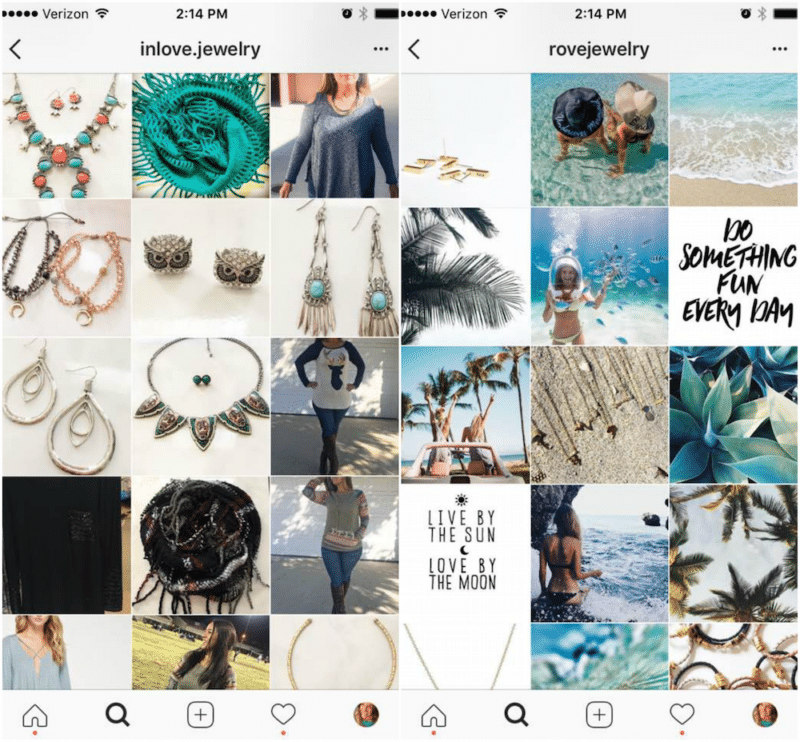
8. Ask Readers Questions
This can be on social media or within the posts. For example, if you write a post about romantic hotels in Tahiti, end by asking readers to contribute their favorite French Polynesian stays in the comments.
Always ask questions on social media to engage readers. For instance, instead of simply sharing a link to a post on delicious meals in NYC, let the reader know your inspiration for the post and tease them a bit with a dish. Then, ask them if they’ve ever had an epic dinner in New York or elsewhere. Make it easy to have a conversation by starting one.
Homework: Set up the What Would Seth Godin Do? plugin on your blog. This plugin allows you to add an automatic message at the top of your posts asking readers to share if they enjoy. You’ll be surprised how many people are more likely to do something if prompted.
9. Engage With Your Readers One-On-One
Adding on to the previous statement, it’s very important to not just share, but to listen and answer. Monitor your social media accounts to see who is sharing what. Then, reward them by taking actions like sharing their content, responding to their comments and questions, or even asking them to guest post if it’s one of your more active followers.
This is also an opportunity to engage with potential future readers by starting conversations with new online friends. Your homework will touch on this.
You may want to hire someone to monitor your channels if you don’t have the time. There are also tools out there that can help with this, like SproutSocial.com. You can also use Google Alerts for free to see who has mentioned your blog, and BuzzSumo to see who has shared your blog posts on social media, and thank them.
Homework: Give yourself a challenge and vow to interact with 15 new people each day on the social media platform of your choice. If you’re feeling really ambitious, make it 100!
10. Make Readers Feel Like They’re A Part Of Your Brand
You may also want to get creative with collaborative-type content. One example is by my friends at The Culture-ist, who once created a Universe Conspires Wall and asked readers to contribute. They also do a great job of making readers feel a part of what they’re doing in the terminology they use. In their menu heading, instead of using verbs like “Travel,” “Change” and “Wellness” they use nouns including “Traveler,” “Changemaker” and “Wellness Warrior” to put the reader in a position to identify with certain types of content.
On my online magazine, Epicure & Culture, I do something similar. On my top menu heading I start on the left with the text “I want to…,” followed by options like “Explore Ethically” and “Eat Local.” In this way, I’m asking the reader a question and having a sort of conversation with them immediately. The image below shows this visually.
Another idea is to get their input on your blog brand. Examples:
- Just check out this post by Wandering Earl titled “The Future Of Wandering Earl – I Need Your Help!“
- Another example is Alex in Wanderland’s “Photo of the Week” series, where she would post multiple photos for her readers to vote on. Here is an example.
Homework: Hop on social media and survey your audience. Ask them a question (and respond to their answers) or create a collage and have readers vote on their favorite photo. These are just a few ideas of many.
11. Converse With Readers By Name
On social media it gives a nice touch to converse with a follower by name or handle. I also find in newsletter correspondence it’s helpful to use merge tags that greet the reader by name. For example, instead of saying “Dear Reader” in your newsletter, it should say “Dear Joe Smith.” Keep the message conversational instead of adding tons of graphics and pizzazz, and your readers will feel like it’s a personal email just for them.
Homework: Sign up for an email newsletter client and create a newsletter template that has personalized merge tags for future correspondence. Example below from my Mailchimp account.
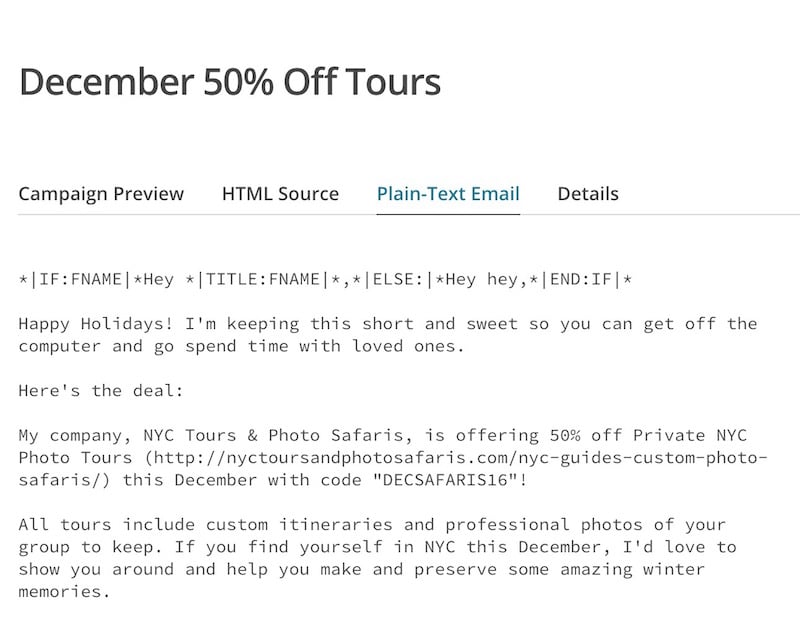
12. Craft Collaborative Posts
Collaborative posts are blog posts that don’t just feature your expertise, but that of others, too. For example, you can compile a post on the best attractions in Rome. Instead of typing out your personal favorite tours, you’d ask numerous people in your community to each share a blurb.
This not only includes how to get blog followers involved with your content, but it can also increase engagement. Once your collaborative post goes live, create a graphic and email it along with the post link to all who contributed, asking them to share on their own channels.
You’ll get your content in front of new eyes (some of whom will hopefully be perfect fits for your community!).
Homework: Come up with a collaborative blog post topic, then reach out to 10 different bloggers, readers and experts to add their two cents.
13. Use Video
While words and images have power, video has the ability to truly engage readers by making them feel like they’re part of your world. This is true whether you’re touring a hotel, taking a cooking class in France, packing for a backpacking trip or talking about your craziest Brazilian bus experience. Make your online conversations feel more like real-life conversations.
Homework: Create and post a video, even if it’s simply you talking about a travel topic or saying hello to your fans from Facebook Live. If you’ve got trip clips, even better.
This video is used on my About Page to give readers a more immersive idea of what’s to come
14. Give Them Something For Free
Offering a complimentary gift has a number of benefits. First of all, it rewards readers for being loyal and makes them feel appreciated. Moreover, they now have something beyond the blog to think of you by, whether that be a checklist or PDF helping them quickly solve a problem, access to an exclusive community or a seat in your email challenge.
It can also help you attract the right audience for your blog. Relate your freebie to your content (and products/services, if you sell these) so the right people are opting in. It’s better to have an active, engaged tribe you can actually help than people who just sit on your list and never open your emails.
Advanced Tip: You can create multiple freebies relating to different content. For example, while in my travel blogging-related posts I offer free blogging worksheets, in popular travelogues I’ll offer a printable version of the post. This helps me separate my email list by interest, as well; as in, I create multiple lists for the same blog.
Homework: Create a free offer to give your blog readers when they sign up for the newsletter. You may also want to link to this offer on your other social profiles. You can see an example in my Instagram profile below.
15. Offer A Class
This keeps your readers coming back for more as you continue to help them solve their problems beyond free content. Once complete, they’ll also be more invested in your website as you’ve given them key tools to enhance their own knowledge or wellbeing.
You can use a platform like Teachable to create your own professional-looking class complete with video and content hosting, navigation, student support, affiliate programs, payment processing, landing pages and more. What’s also great about this is you can create a forum or private Facebook group for attendees to ask each other questions and collaborate, as well as get personal attention from you.
My Teachable affiliate link includes a two-week free trial, too!
Homework: Start brainstorming your class. If you’re unsure of what the topic should be, go through emails from readers and note what people are asking you. Once you’ve narrowed down a topic, create a mindmap to brainstorm what each section will cover. A mindmap (shown below) is essentially an idea with many branches forming off of it to further develop the idea.

16. Create An Exclusive Community
Instead of offering a traditional online class, Lightroom and photography expert Cole of Cole’s Classroom does this in a different way. Along with video courses, he lets his community subscribe to his Cole’s Clique for $1, with the price going up after that to $24-$49 per month.
Another example is my Travel Blog Prosperity members-only coaching course. Similar to Cole, instead of offering a single course, I pack numerous topics into one ongoing coaching program that teaches through video classes, how-to guides, implementation checklists and live coaching calls. I really aimed to create one of the best travel blogging courses out there!
This format allows you to help readers in an ongoing, intimate style. Additionally, you alleviate them from having to purchases 20 different courses while offering an opportunity for collaboration with yourself and others. I advise adding lots of awesome community perks to further reward your tribe, like giveaways, guest speakers, themed challenges, free webinars, and bonus content.
By the way, if you need help with your webinar strategy this video tutorial can help:
Homework: This option won’t be for everyone; however, if you think it’s for you start brainstorming your membership site topic and logistics. Is it as simple as a private Facebook group with perks added, or do you need to use additional software? You can again use Teachable or the s2Members plugin.
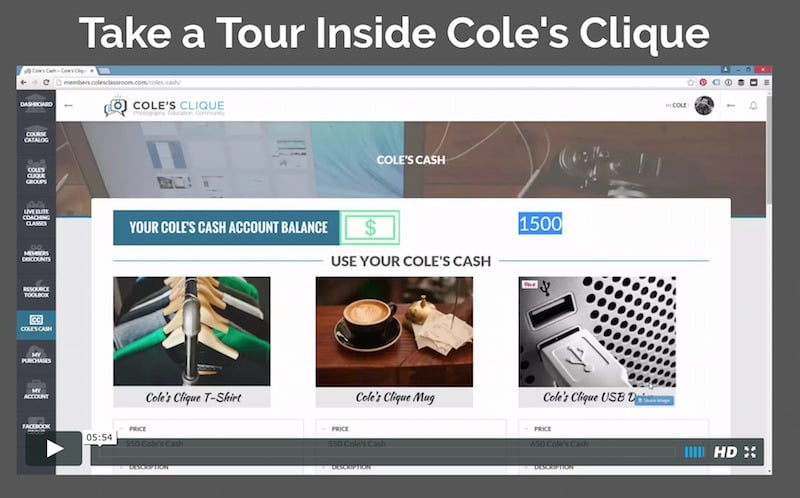
17. Create A Free-To-Join Club
Different from the exclusive community mentioned above — which would typically be a paid membership for a very robust suite of offerings — is setting up a free club for your readers to join. Think carefully about what your readers would be interested in, while also considering what’s already out there and what makes you unique.
One example is Nomadic Matt’s Book Club, where he doesn’t just have his followers read books; to make the club worthwhile, Matt also lists out six reasons to join right on the membership page, from “you won’t have to wonder if a book is good or not” to “you’ll get ideas for future trips.” From there, he offers members access to perks like literary giveaways, gifts and Amazon gift cards.
Homework: Again, the club option may not be for everyone; however, if it’s for you start brainstorming the topic and logistics of how you’d get it off the ground. Private Facebook groups and newsletters are two easy ways to get information out to club members.
18. Host Giveaways
Another way to reward and engage readers is by hosting giveaways with great prizes.
“Great prizes” is the key here.
There is a lot of noise online nowadays, so offering a passport protector or glass water bottle likely won’t get super high engagement, though it is a nice gesture. The more exciting the prize — hotel stays, action cameras, Priority Pass subscriptions — the better.
Once you post your giveaway, readers get more excited about your brand. And this helps you in another way, too. Depending on the terms of your giveaway, it can lead to more subscribers, traffic and social media followers. Additionally, it can place your blog in front of new people who can potentially benefit from your content.
Homework: Now would be a good time to start thinking about the logistics of the giveaway. Consider who might donate a prize, whether you’re ready to charge brands for the opportunity to showcase their product in front of your audience, and what the terms of the competition will be. I recommend using Gleam (they have a free version), which has tons of different giveaway templates with features like interactive widgets, winner choosing and 3rd party integration that make running a competition easy and professional.
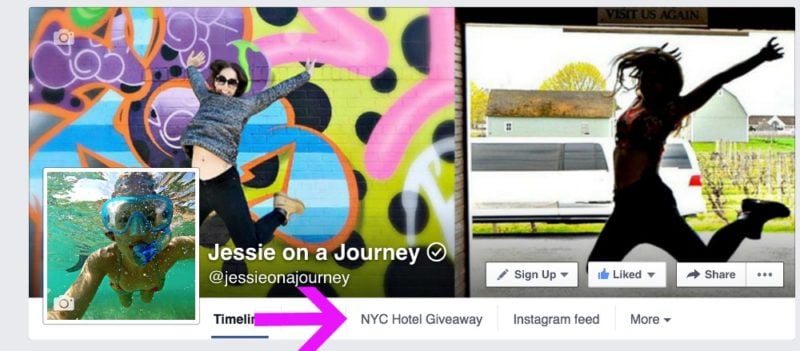
19. Create An Affiliate Program
For bloggers who sell products and services, having an affiliate program creates a community of brand ambassadors.
It works like this: you offer your readers the chance to earn a percentage of your income based on referrals they generate. So, say you sell a $10 e-book about how to travel as a solo female. You can provide readers interested in promoting the book a special link that, when clicked on to generate a purchase, gives the affiliate associated with that link a percentage of the profit.
Homework: If you sell products and services and want to test the waters of running an affiliate program, try the free Affiliates WP plugin. You can upgrade to their Pro version for more features. There are other options, too, which you can check out here.
20. Have A Branded Hashtag
One way to get everyone talking about your brand is having a hashtag to tie it all together. For example, for my NYC photo tour company I use the hashtag #NYCInAFlash. I encourage my guests to use the hashtag when posting photos from my tours. This allows other guests to check out what tours are like and even interact with past guests. It also makes it easy for me to find and continue conversing with past guests online.
You don’t need to be a traditional company to have a hashtag. Bloggers can use hashtags to rally their followers around their content’s mission, whether that be offering advice on Asia travel or ethical volunteering around the world.
Homework: Come up with a hashtag for your blog. The trick is to make it short and sweet, and make sure it isn’t being used. Something general like #WorldTravel won’t work, as it’s been used myriad times already and isn’t brand specific. Instead, choose a name that people will immediately associate with your blog specifically.
Because my tagline is “Taking You Beyond The Guidebook,” I’ve started using #BeyondTheGuidebook as a hashtag. People realize right away what the narrative is about, making it easy for them to join in.

21. Plan Meetups
While technology has taken over the world, nothing beats good ole’ face-to-face communication. This can really help cement a relationship with your readers that goes beyond them simply reading a few of your blog posts. And how awesome is it to meet — and thank — the people who support your work in person?
Homework: Depending on where you’re at on your blogging journey, you have a few choices. If you’re established and based in a city where your readers can easily travel to, plan and host a meetup at a local bar, coffee shop, park or other venue. Feel free to get creative and brand specific — for instance, planning a yoga meetup if you write about wellness travel.
If you’re not sure whether you have enough of a sizable audience to warrant your own meetup, collaborate with other local bloggers to plan a joint meetup, or reach out to local readers one-on-one and invite them for coffee.

22. Talk With Them (vs At Them)
The tone you use on your blog will depend on your niche and the brand you’re going for.
Personally, I find that most people like being spoken to in a conversational tone vs an overly formal or market-y tone. Make them feel like you’re someone they’d be friends with — and trust — in real life.
If you want to tell a joke, tell a joke. If you’re the type to use profanity and don’t mind putting that out there, use it. If you’re obsessed with bad puns, sprinkle those in there.
Be yourself and be human, and people who resonate with your unique voice will gravitate toward your writing.
Homework: Practice writing a conversational blog post. You can either write a new post or revamp an old one. As you write, keep these best practices from CopyBlogger in mind.
What tips for engaging readers would you add to this list?
Enjoyed this post? Pin it for later!

Hi, I’m Jessie on a journey!
I'm a conscious solo traveler on a mission to take you beyond the guidebook to inspire you to live your best life through travel. Come join me!
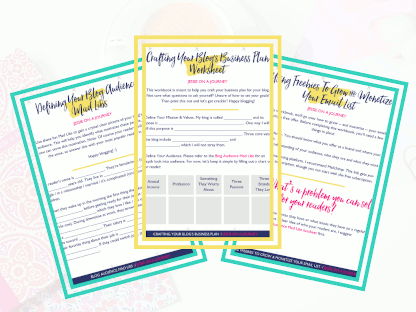
Want to live your best life through travel?
Subscribe for FREE access to my library of fun blogging worksheets and learn how to get paid to travel more!



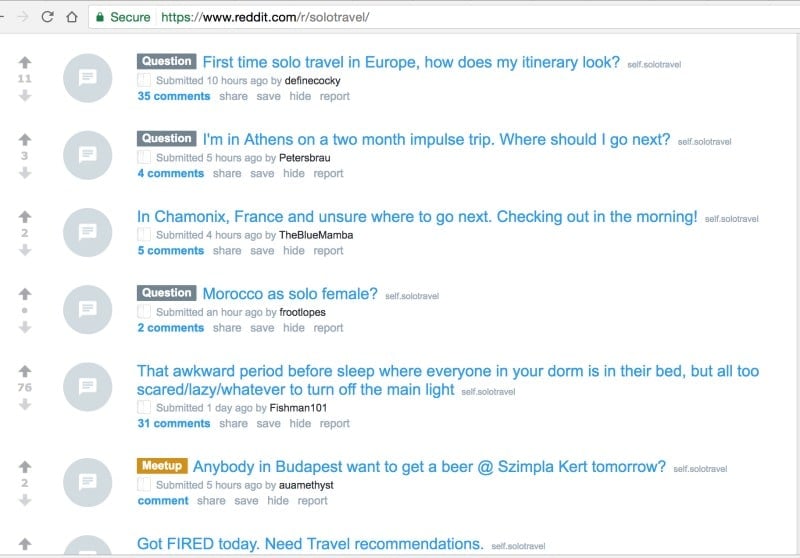



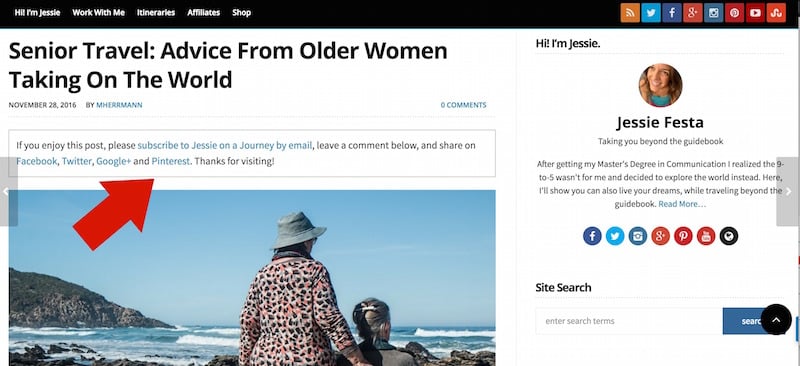

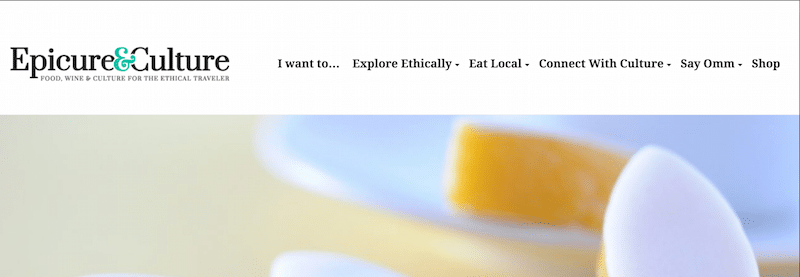

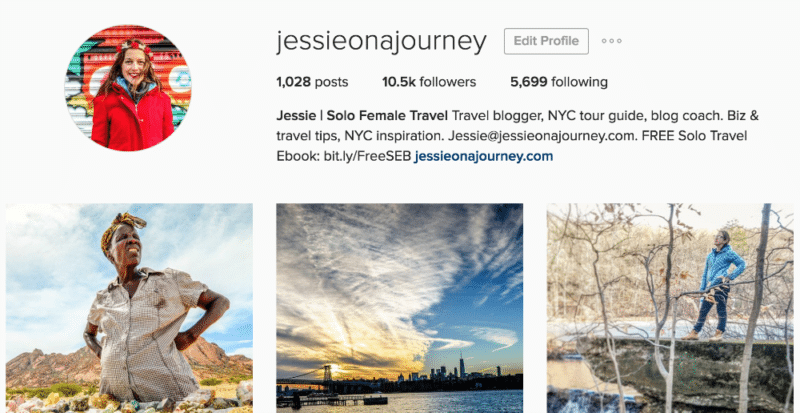

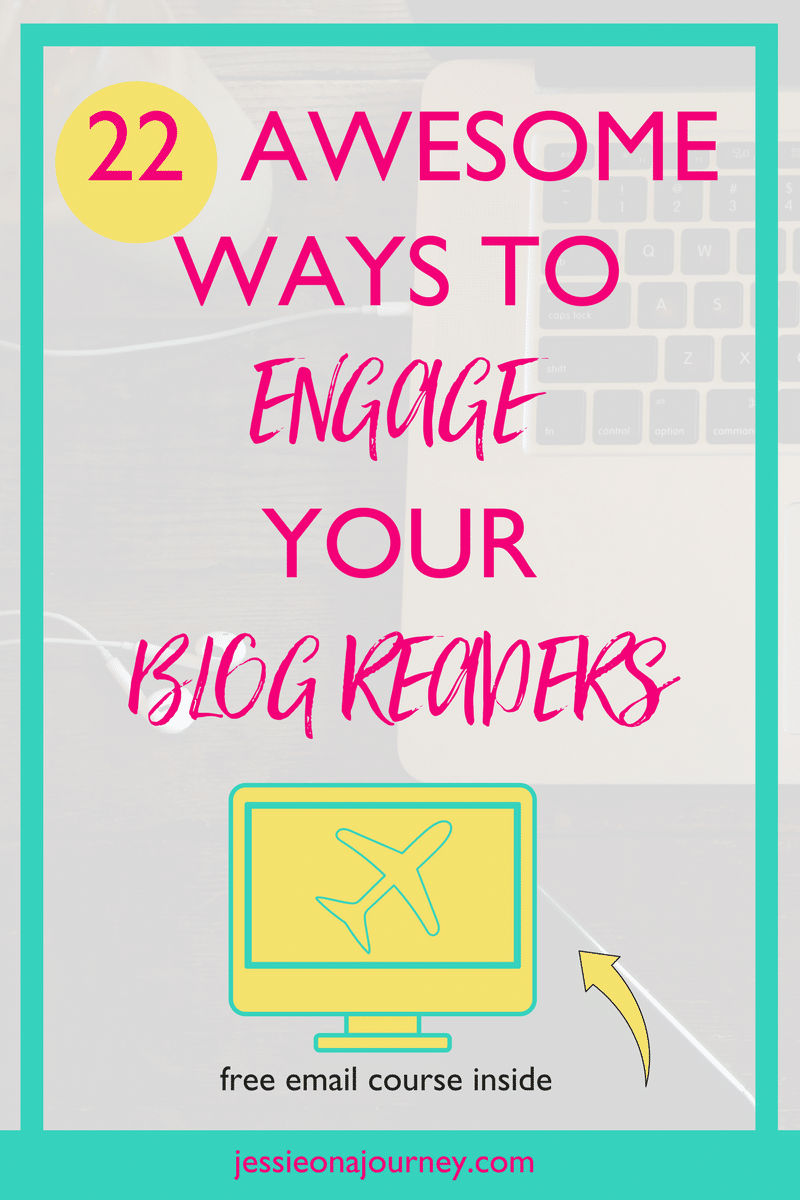

I would add: Write what your readers like to read. This post is what every blogger needs, Jessie.
What a great post!
Thank you for writing this. I know I needed to read this and have plenty of work to do on my end.